Lessons From The Success of Super Smash Bros.
Nintendo had never been known for its fighting games, had rarely set foot in competitive play, and had focused on storytelling as a primary aspect of gameplay, and thus took the world by storm with the whirlwind success of Super Smash Bros., originating on the Nintendo 64 entertainment system and producing three sequels to date. With fighting games sales lagging behind the rest of the market, the ongoing installments have somehow pulled head-and-shoulders above the competition. When placed in the same ring with more traditional fighting games, such as the Tekken series, the Soul Caliber series, or the Street Fighter series, Nintendo’s contestant sticks out like a sore thumb, but those aspects which make it different–and make it a uniquely Nintendo product–are exactly those which make it the reigning champ.
Primarily, the aspects that deviate most from the industry standard are the percent-based damage system, the largely combo-less play, and independent interactions of the characters, all of which lend themselves to an effective atmosphere of second-chances and unbelievable moments. While playing a few games will attest to how fun this set up is, it will require a more in-depth approach to actually explain what makes Super Smash Bros. enjoyable. Plus, by challenging what is conventional in this specific genre, Nintendo has provided a perfect window into what, exactly, makes the fighting genre fun, a study that competitors would be wise to take note of. All of this is possible because, regardless of what may superficially appear to be the case, Super Smash Bros. has highlighted the defining reason we play fighting games: fighting games satisfy a need to feel capable.
The Percent-Based Damage System
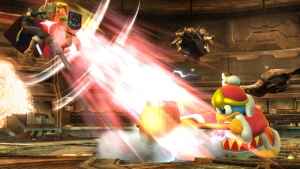
In the newest Mortal Kombat game, the player can safely expect that victory will be determined by depleting the enemies life bar, an assumption shared by the vast majority of the genre. Super Smash Bros. provides an alternative format, where combat is not a subtraction of health, but an addition of damage, counting upwards to 999%. While the game modes differ slightly in exactly how victory is measured, they all focus around a basic premise: knock your enemies from the stage. Defeat is not measured by a hard limit in this series; as damage accumulates, characters become less able to resist the forces of attacks and are knocked further and higher with each attack, until someone is knocked off-screen and removed from the fight.
Of course, this does mean that fights have no set end, and that an opponent that has been losing throughout the entire match could make a comeback. This is intentional, and does not detract from the meaningfulness of each hit. The power of each hit has absolutely no value without the percentage added from every previous hit, so landing a few weak attacks promises that a later strong attack will be that much stronger. In fact, Nintendo has developed the game to highlight this particular aspect. Visual effects enhance the collision of attacks at critical levels of damage, such as red-and-black lightning or stuttering, slow-motion framerates. This is not to reward the use of heavy attacks, however, as a heavy attack used ineffectively produces no effects. In this way, each attack’s value toward the fight is made somewhat vague, as it is dictated by all the other attacks. Instead, the focus is on creating high-tension moments by highlighting when a character has reached a critical level of damage or exposed a weakness.
This tension spreads throughout the entire match which crescendos as the combatants become more susceptible to attacks. However, this use of tension also rewards moments of skillful play more than traditional damage meters. The moment of victory is indefinite here, meaning each successful dodge, well-executed counterattack, or glancing shot could be the most important action of the game, leading directly to success. Advantages are also shifting and inspecific; in the traditional game, the character with more health clearly has the lead of specifically that amount of health, but in Super Smash Bros. a player must still be wary when fighting an opponent with double the damage, increasing the drama and making both players still feel relevant, even when apparently behind. Yet measuring by percentages also allows the leader to be visually rewarded for leading the fight without sealing the fate of the other.

This goes into satisfying the player’s need to feel capable. Through all of the manners discussed, Nintendo has shifted focus away from the moment of victory, and placed it squarely upon the play itself. A player can be rewarded even in defeat by the memory of a particularly talented dodge which, as far as all players can know, may have prevented a premature death, or by the understanding that the next hit could have turned the tables at any point in a fight. The existence of doubt about exactly how close the fight actually came and the malleable worth of any particular action prevent losses from being especially condemning, and make every game a close one. Thus, Victory is neither meaningless nor conclusive in Super Smash Bros.
Combat Without Combos
Comboing attacks is a specific concept within the genre, the idea that certain button combinations are designed with the intention of being used together (usually requiring a certain combination of reflexes, timing, and memorization to successfully do) which tends to end with a particularly powerful attack at the end, one which is otherwise inaccessible. Super Smash Bros. does not utilize any part of this idea. In this game, combo attacks are simplified to the lowest common denominator: either the attack requires the repeated pressing of a single button, or the pressing of two buttons in conjunction. Moreover, since all combos for all characters are assigned to the same buttons, there is little need to memorize to play a character. There is no skill required to powerful attacks; skill is only required to use them effectively.
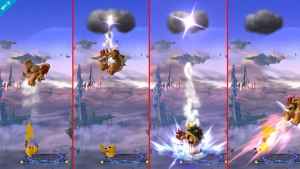
The divide between skilled and unskilled players is easier to bridge in this gameplay, and refocused to be more comfortable for newer players. For some, being the victim of a combo can feel debilitating, as one is unable to interrupt the flow of attacks from their superior opponent. By reducing combos to this simplified state, Super Smash Bros. has changed the importance from knowing the attacks to knowing when to attack. Even if a novice player is outclassed, they can only fear individual attacks at a time, with opportunities to recover and counterattack as a natural, intrinsic parts of the system. The player is always able to land a couple of attacks or escape from their opponents follow-up, leaving the feeling that one could do something, one is capable of doing something, even if ,they are unsuccessful in the end.
This does not jeopardize the value of skill, however. Much like dealing a higher damage percentage makes one feel more comfortable and likely to win, so does experience with the game increases the chances. And, since combos are limited to simple inputs that must be combined with careful planning and manipulation of character placement, attack knockback, and other indicators of ability in order to take full advantage of each attack, competitive players can see greater returns on practice than in other fighting games. Overall, this means that both new and old players are benefited by Nintendo’s approach when keeping the idea of capability in sight.
Independent Movement and Interaction
Initially, it seems odd to design a fighting game in which players are not focused on their opponents. The classic layout is to place the fighters on opposite sides of the screen, facing each other and automatically targeting all attacks towards each other. Even the advent of 3-D did not dramatically affect this trope, as Naruto: Ultimate Ninja Storm, Soul Caliber, and other newer fighting games simply rotate the camera to keep this opposition the same. If defeating the opponent where the end goal of the game, this arrangement makes sense, but Nintendo sees deeper into the genre and understands that victory is just one means to feel capable and powerful. By freeing movement, Super Smash Bros. also frees up options for the player to satisfy their need in a match.
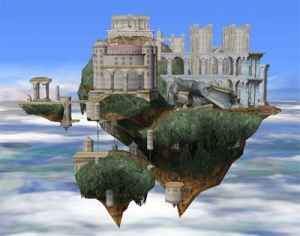
After the starting bell, a player is free to move without relation to the opponent; there is no difference in attacks facing an opponent or facing away from an opponent, attacks are not drawn inexorably towards the foe, and a player can move as far from or as near to an opponent as they like. As a compliment to the previous points, this allows for more variables during a battle. One’s position plays into the value of an attack: a skilled player would use stronger attacks when opponents are nearest the stage’s edge, to increase the chance of knocking them off and making the success of the attack more valuable. Landing that attack, without the game automatically focusing towards the opponent, is indicative of a player’s ability (or luck) and more rewarding because of it. Just the same, dodging or defending against an attack is an option, but one reliant on the player using their timing or positioning effectively. Either way, the outcomes are placed squarely and explicitly in the players’ hands, increasing the tension of a match and the ways in which a player can feel capable, even without victory.
Moreover, independent interaction allows for a greater breadth and depth of strategies during a match. Players can use attacks with the intention of forcing an opponents movement, or as unexpected methods of escape, or in whatever other ways one can think of. Instead of the opponent, players can target the stage, items on the stage, or the open air, which is incorporated intentionally by Nintendo’s tendency to make certain attacks effective for returning to the stage when launched, and the way that free movement can be temporarily lost to perform risky attacks or punish wanton use of abilities. This further adds to the vagueness of value in each attack, since a missed shot could be useful for repositioning, and powerful abilities can require the opponent to sacrifice movement. In both cases, opportunities are created to do something impressive even in defeat, never leaving the player feeling incapable.
All of these paths lead to the satisfaction of the need to feel capable. Interestingly, each of these three points either furthers the opportunities for a critical moment or rewards the exploitation (or prevented exploitation) of these opportunities, if not a little of both. It should come as no surprise; in daily life, many people would feel unsatisfied if they were unable to get ahead, or if their achievements went completely unrecognised. In the context of Super Smash Bros., the need to feel capable through opportunity and recognition boils down to these highlighted ideas in a way that isn’t present in the competition. In focusing on finite health limits and the defeat of one’s opponent, many fighting games have stifled their own ability to satisfy players, which Super Smash Bros. has taken full advantage of.
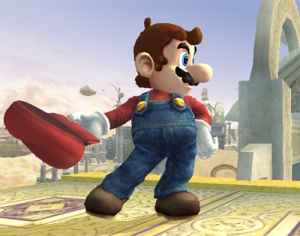
Of course, this is not to say that these ideas are exclusive to Super Smash Bros., nor that it should be. There is a niche for video games, and a seductive one at that, to address precisely the sorts of stories and emotional needs that other forms of art and entertainment are incapable of doing. Nintendo’s interest in making the players feel capable in this series has arguably led directly to the success of the game and, more importantly, to greater enjoyment overall. By capitalizing on these sorts of topics, video games can be brought to points of commercial and critical success.
The success of Super Smash Bros. is worth noting beyond the boundaries of fighting games, as well; what is the point of a shooter if not to make a hero of the player? Why build a character in an RPG if not to indulge our desire for rewarding our improvements? Exploring how these ideas play out in other genres will advance the ways in which game designers and players think about the games they play, much the same way movies and books can encourage self-reflection or critical analysis now. Expanding the range of emotional and intellectual needs which games can satisfy will bring them to a larger base and solidify their place as art in culture. And, of course, understanding all of this will to more games as fun as Nintendo’s quirky fighter.
What do you think? Leave a comment.
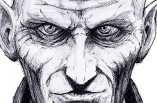
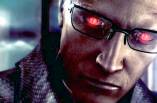
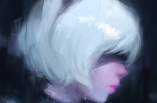
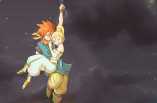
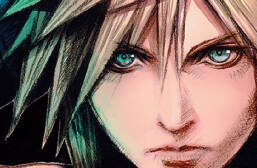
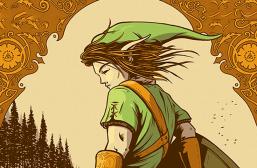
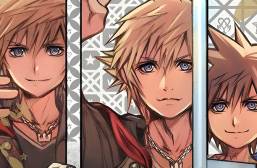
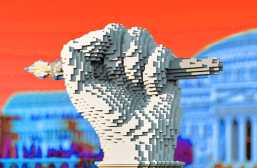
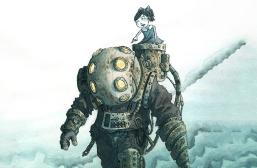


I love the series, even if I suck at the games. They’re just super fun. I remember trying to beat the 100-man melee in Super Smash Bros. Melee four hours with my friends, just so we could unlock Falco. Good times, and great memories.
This has always been a boring fighter. Never cared for any of them.
Super Smash Bros is probably the greatest Fighting game franchise of all times, and then Tekken, then Street Fighter then Mortal Kombat for me.
Casual figher… maybe. But for more advanced players, not at all. 🙂
I strongly suggest that you look at the competitive scene before claiming that advanced players aren’t be interested in this game.
(I’d also appreciate it if people stopped using “casual” as a dirty word, but I don’t think that’s going to happen any time soon, unfortunately.)
As a kid playing the original, I enjoyed playing classics like Donkey Kong and Mario while also enjoying playing Captain Falcon and spamming his Falcon Punch. The fun memories last for years, and obviously Melee and Brawl each continued that trend. I have way too many memories to recount here, but I want to add that I admire Sakurai’s work ethic, determination, and ability to make games that can be played for many years.
Loved your article. I am surprised that more fighting games have not implemented the smash bros styled game play. Probably because they would be seen as a rip off.
I’m not a big fan of traditional fighting games in any sense (the exception being the rebooted Mortal Kombat games and Injustice), but I absolutely adore the Smash Bros. series. I feel that a huge reason so many people swallowed it up to begin with, besides the awesome idea of Nintendo characters fighting, is that there wasn’t a fighting game for die-hard Nintendo fans at the time, and there hasn’t been one since except for Punch-Out on the Wii (off the top of my head). It’s good that the franchise has remained consistently as good as it has.
Melee was my favorite and me and my sis poured hundreds of hours into that game…we unlocked most of the characters just having fun
Why do they keep adding and removing characters each game release? I loved Dr Mario.
Dr Mario is in Smash 4. Like in Brawl, you need to unlock him. Ganondorf’s also in there, which is great, because Ganondorf is awesome.
The first is still my favourite, there’s such a rawness to it.
I have always adored the Smash series. Each game is a masterpiece in and of itself, and usually a snapshot of Nintendo at that moment in time. Each game is a love letter to the previous console.
smash bros was my first n64 game with my n64 when i got it for my birthday plus controllers
Smash is probably my favorite Nintendo series mostly due to Melee being so awesome, played and own all of them though only got properly into the series Melee. Have a bunch of memories playing with my big bro and friends after school.
I do love Nintendo and this intrigues me.
Melee is still the best in the series. I never played the N64 version for some reason, so the nostalgia just isn’t there for me.
I remember staying up late time after time when staying over my friend’s house to play Melee. We tried to earn all of the tough trophies and exhausted pretty much every urban legend on how to unlock Toad. One of the sweetest things we did was to beat Classic Mode without ever taking damage – a requirement for one of the trophies.
To me, each installment should have had a portable companion, but hey, can’t win ’em all.
Brilliant article!
Smash was the sole reason I bought a Wii, today I’m six challenges away from finally completing Brawl.
Nice retrospective.
Smash deserves the numbers and I’m very pleased with the latest iteration on the 3DS I must say!
Got my copy (physical) last weekend and it’s awesome! Best characters ever! Only thing i’m not that statisfied about is the fact that they decreased the lenght of the single player “classic” mode. That particular mode always was my favorite in previous Smash titels.
this franchise is awesome.
Great read! I thoroughly enjoyed it. I still love the commercial for the very first Smash Bros. It was hilarious.
I remember joining the petition with ngamer / n64 magazine to get smash localised and into the west. I’m glad we put the effort in.
smash has been a wonderful thing for nintendo. and to think the original game didn’t even have real characters.
This is easily my favorite Nintendo series – nay, series in general – of all time.
Smash Bros does a good job making the cast feel great together
I was a proud owner of Smash 64 as a kid, and it was probably my second favorite game behind Mario 64.
I personally think Playstation All Stars is on par with the Smash series (despite having only one entry), because it treats the brawls more like a 1v1 fighting game (combo heavy) than the Power Stone/Smash Bro’s hit-really-hard-once model.
You aren’t going to have very much luck if you try to play Smash as a hit-really-hard-once model game. Most characters can’t launch enemies very hard until they’ve got their damage rating up to 60% or so; of those, only a few of them are capable of actually ‘killing’ their opponent at that point. Most advanced players try to link long strings of hits together in order to build up damage quickly, then knock them off the stage at the very end of it. The game is heavily reliant on split-second planning, and being able to react to minute changes in circumstances is very important.
I have a long and favorable history with the series.
I grew up loving the game on N-64 and Game Cube but I fear that less is more when it comes to the “Brawl” version. Sensory overload in my opinion.
Interesting analysis. I feel you may have shown us a bit of not only Smash Bros.’s heart in this article, but also Nintendo’s heart and core values as well. Engaging read!
Not only do you speak to the elements of this video game that make it a satisfying experience, I think that you’re touching on the factors that help us feel satisfied with the variety of experiences. My work looks closely at the factors that improve well-being in general and it’s amazing to me how the elements that you outline align with factors of emotional well-being.
I think you missed one important element in Smash’s reason for being so popular, Project M. Without that game hack repopularizing the series for university/college students the continued hype for the series would be nowhere near what it is now.
I always hated when attacks were drawn towards your enemies in games. It just seems so unfair. I’ve always loved Super Smash Bros (and Diablo 2) for their ability to create a vs experience that has an element of interactivity and exploration. Pikachu FTW
Smash Bros., and in particular, Melee, has what most fighting games don’t; free form movement and combo options. While it may at first seem like a another platformer by Nintendo, with its less-than-realistic physics and graphics, Smash Bros. represents Nintendo in a way more than any of its other games can. The free form creativity that is spawned the second the announcer counts down gives gamers near limitless options to move their Luigi, Pikachu, or, for the especially volatile, Falco (who certainly prefers the air, though his recovery is shoddy). Smash Bros. isn’t about memorizing combos its about the in the moment split decisions that make the game more a recreation of jazz than anything else.
I’d like to offer a critique to several aspects of your article. First, there are definitely advanced combos that only the most diehard players will even know about, .e.g. the reverse arial rush. Additionally, there are a host of skills that can be honed in terms of timing that will provide a major edge when facing skilled opponents, e.g. directional interference or “teching”. Each game features a different set of possible combos to exploit, whether intentionally programmed or as a byproduct of the intended programming. Though, at this point I have played the WiiU version only one time. However, if we turn our attention to Melee, which pros argue is the best Smash ever commercially produced, we see the game physics allows much more competitive play–if you know what you are doing. Secondly, and in the same vein, a game of Smash can be very one sided when competing against a skilled player who understands the combo and timing mechanisms of melee. I played the 64 version as well as melee growing up but years later I was introduced to Brawl in college. Once we began playing all the time I got pretty good, even though my roommates had been playing it for years (affirming your position about the balance). However, one day someone brought back a copy of Melee and we began playing that instead of Brawl. It was completely different and I was never really able to catch up… for a while at least. It was not until we discovered Project M that I began to discover the combo and timing mechanisms that allow a competitive Smash player to transform into an impossibly annoying adversary. Much of the combos, techs, and timings must be read about, digested, and practiced for some time in order to mold yourself into what I would consider “the competitive Smash player.”